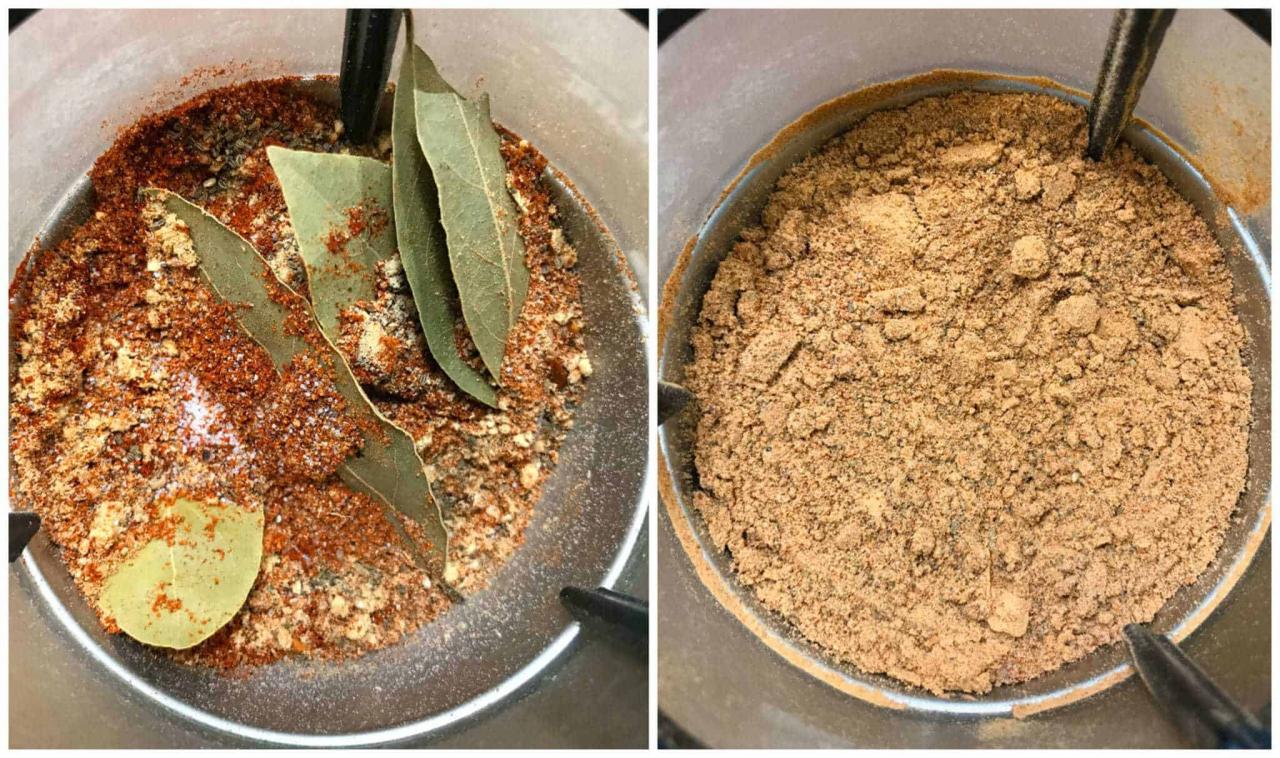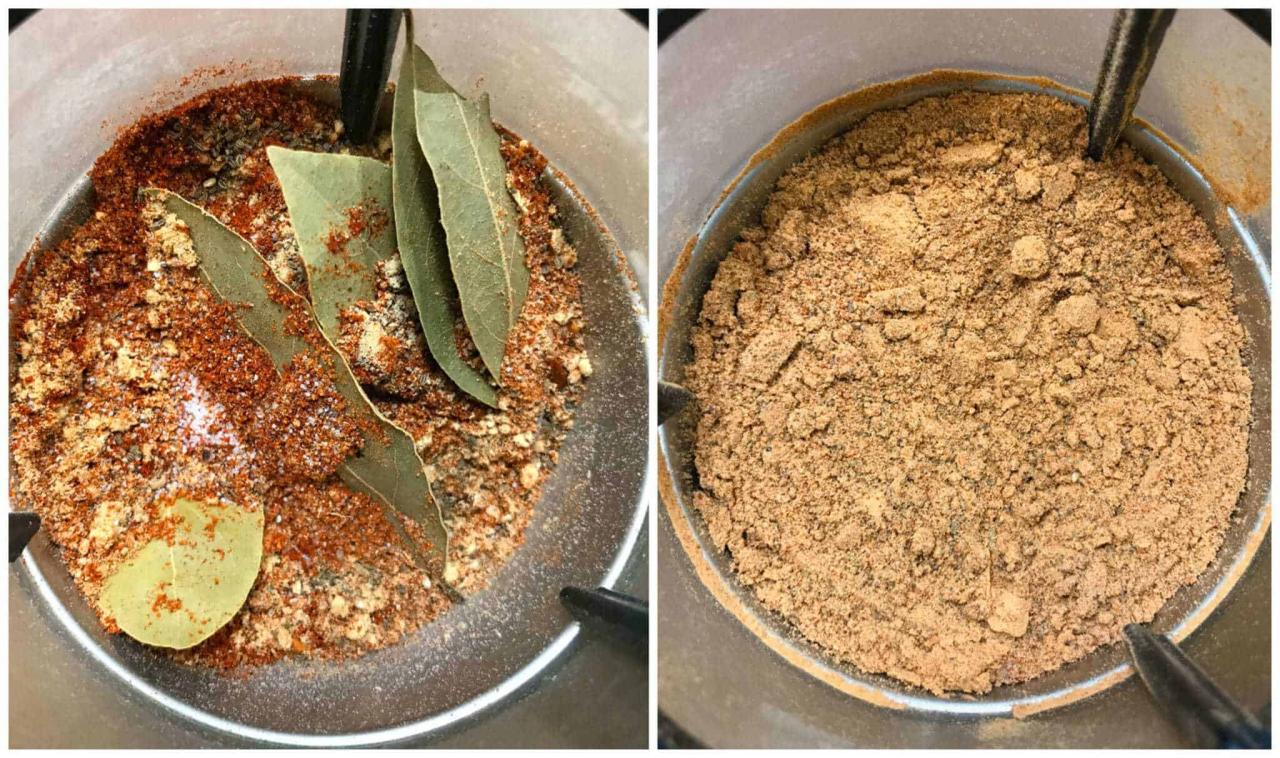How to Get the Best Results with These Bay Leaf Substitutes is a question many home cooks find themselves asking. Bay leaves, with their earthy, slightly bitter aroma, are a staple in many cuisines, adding depth and complexity to dishes.
But what if you’re out of bay leaves or simply want to experiment with different flavor profiles? The good news is that there are several effective substitutes that can deliver similar results, allowing you to recreate those signature bay leaf flavors in your own kitchen.
This guide will explore a range of common bay leaf substitutes, each with its own unique flavor profile and culinary applications. We’ll delve into the factors to consider when choosing a substitute, ensuring you select the perfect option for your specific dish.
From using substitutes in soups and stews to incorporating them into sauces and marinades, we’ll provide practical tips and techniques to help you achieve the best results. Whether you’re a seasoned chef or a home cook looking to expand your culinary repertoire, this guide will equip you with the knowledge and confidence to confidently use bay leaf substitutes and create delicious, flavor-packed meals.
Introduction
Bay leaves, with their distinctive aroma and slightly bitter flavor, are a staple in many cuisines worldwide. They add depth and complexity to dishes, enhancing the overall flavor profile. From hearty stews and soups to flavorful sauces and marinades, bay leaves are a versatile ingredient that can elevate culinary creations.
However, situations may arise where finding fresh or dried bay leaves becomes challenging. Perhaps you’re out of bay leaves, or maybe you’re trying to avoid using them due to dietary restrictions or personal preferences. Fortunately, several substitutes can be used to achieve similar flavor profiles, allowing you to create delicious dishes even without traditional bay leaves.
Understanding Flavor Profiles
Bay leaves possess a unique flavor profile that’s characterized by their earthy, slightly bitter, and slightly camphoraceous notes. Understanding these key characteristics is crucial when choosing substitutes, as they can be replicated using different combinations of herbs and spices.
To get the best results with bay leaf substitutes, it’s important to understand their unique flavor profiles and how they can enhance your dishes. For a comprehensive guide on the best substitutes and their applications, check out The Ultimate Bay Leaf Substitute Guide for Delicious Cooking.
This guide will help you choose the perfect substitute based on your recipe and desired flavor, ensuring that your dishes are just as delicious as if you had used bay leaves.
Common Bay Leaf Substitutes
While bay leaves are a staple in many cuisines, there are times when you might not have them on hand or need to substitute them for a different flavor profile. Fortunately, several alternatives can provide similar or unique flavor notes to enhance your dishes.
Common Bay Leaf Substitutes
Here are some common bay leaf substitutes, along with their flavor profiles and typical uses:
Name |
Flavor Profile |
Common Uses |
|---|---|---|
Rosemary |
Piney, slightly bitter, and herbaceous |
Roasted meats, soups, stews, and sauces |
Thyme |
Earthy, slightly lemony, and slightly sweet |
Chicken, fish, vegetables, and sauces |
Sage |
Earthy, slightly peppery, and slightly bitter |
Stuffing, poultry, pasta dishes, and sauces |
Marjoram |
Slightly sweet, slightly peppery, and slightly minty |
Eggs, vegetables, soups, and stews |
Oregano |
Earthy, slightly bitter, and slightly pungent |
Pizza, pasta, tomato sauces, and Mediterranean dishes |
Tarragon |
Slightly licorice, slightly anise, and slightly sweet |
Chicken, fish, eggs, and sauces |
Choosing the Right Substitute
When deciding on a bay leaf substitute, consider several factors to ensure the best results for your dish. These include the specific recipe, desired flavor intensity, and the availability of ingredients. Choosing the right substitute requires a thoughtful approach, considering the nuances of your dish and the desired outcome.
Determining the Appropriate Amount of Substitute
The amount of substitute to use will depend on the original recipe and the intensity of the substitute’s flavor compared to bay leaves.
- If using dried herbs, start with half the amount of bay leaves called for in the recipe, as dried herbs are more concentrated in flavor.
- For fresh herbs, use twice the amount of bay leaves, as fresh herbs are less potent.
- When substituting with spices, like rosemary or thyme, use a smaller amount than bay leaves, as their flavor profiles can be more intense.
Using Bay Leaf Substitutes in Recipes
Bay leaf substitutes can be seamlessly incorporated into a variety of dishes, adding depth and complexity to your culinary creations. Whether you’re crafting a hearty soup, a savory stew, a rich sauce, or a flavorful marinade, these substitutes offer unique flavor profiles and versatility.
Using Bay Leaf Substitutes in Soups and Stews, How to Get the Best Results with These Bay Leaf Substitutes
Bay leaf substitutes can elevate the flavor of soups and stews by adding subtle nuances and depth.
- Dried Thyme:Thyme’s earthy and slightly peppery notes complement the rich flavors of hearty soups and stews. For a similar effect to a bay leaf, use about 1/2 teaspoon of dried thyme per 4 cups of soup or stew.
- Dried Rosemary:Rosemary’s potent aroma and piney flavor can add a unique dimension to your soups and stews. Use about 1/4 teaspoon of dried rosemary per 4 cups of soup or stew.
- Dried Marjoram:Marjoram offers a mild, sweet, and slightly minty flavor that blends well with the earthy notes of many soups and stews. Use about 1/2 teaspoon of dried marjoram per 4 cups of soup or stew.
When using these substitutes, add them towards the end of the cooking process, allowing the flavors to meld without becoming overpowering.
Using Bay Leaf Substitutes in Sauces
Bay leaf substitutes can be used to enhance the complexity of sauces, adding depth and a touch of sophistication.
- Dried Oregano:Oregano’s warm, earthy, and slightly bitter notes work well in tomato-based sauces, adding a savory dimension. Use about 1/2 teaspoon of dried oregano per 1 cup of sauce.
- Dried Basil:Basil’s fresh, herbaceous, and slightly peppery flavor can be used to elevate the taste of creamy sauces, adding a touch of brightness. Use about 1/4 teaspoon of dried basil per 1 cup of sauce.
- Dried Tarragon:Tarragon’s unique, slightly licorice-like flavor can add a distinctive twist to sauces. Use about 1/4 teaspoon of dried tarragon per 1 cup of sauce.
Add these substitutes during the simmering process, allowing the flavors to infuse into the sauce.
Using Bay Leaf Substitutes in Marinades
Bay leaf substitutes can be used to infuse marinades with complex flavors, adding depth and complexity to meats, poultry, and seafood.
- Dried Sage:Sage’s earthy, slightly peppery, and slightly bitter notes can add a robust flavor to marinades for meats, poultry, and seafood. Use about 1/2 teaspoon of dried sage per 1 cup of marinade.
- Dried Parsley:Parsley’s bright, fresh, and slightly peppery flavor can add a touch of brightness to marinades. Use about 1/2 teaspoon of dried parsley per 1 cup of marinade.
- Dried Thyme:Thyme’s earthy and slightly peppery notes complement the flavors of many marinades. Use about 1/4 teaspoon of dried thyme per 1 cup of marinade.
When using these substitutes in marinades, ensure they are added towards the end of the marinating process, allowing the flavors to infuse without becoming overpowering.
Tips for Enhancing Flavor

While bay leaf substitutes can effectively replicate the earthy, slightly bitter flavor of bay leaves, there are techniques you can use to enhance their flavor profile and ensure your dishes are truly delicious.
Using Heat to Enhance Flavor
Heat plays a crucial role in unlocking the full flavor potential of bay leaf substitutes.
- Toasting: Toasting substitutes like dried herbs, spices, or even dried citrus peels intensifies their aroma and flavor. This process helps to release volatile compounds that contribute to a more complex taste. For example, lightly toasting a few juniper berries before adding them to a stew can create a more pronounced, earthy flavor.
When experimenting with bay leaf substitutes, remember that the key to success lies in choosing the right flavor profile for your dish. For instance, if you’re looking to add a touch of floral complexity, consider incorporating edible blue flowers like borage or chicory, as described in our guide to Blue Flowered Plants: Your Guide to Delicious and Eye-Catching Salads.
These vibrant blooms not only add a visual pop but also impart a delicate, slightly sweet flavor that complements many savory dishes.
- Simmering: Simmering substitutes in liquids like broths, sauces, or stews allows their flavors to infuse into the dish over time. This is particularly effective for substitutes like dried herbs, spices, and citrus peels. For instance, simmering a few pieces of dried orange peel in a tomato sauce for 30 minutes will infuse the sauce with a delightful citrusy aroma and flavor.
Combining Substitutes
Combining different substitutes can create a more layered and nuanced flavor profile, mimicking the complexity of bay leaves.
- Spice Blends: Combining several substitutes like dried herbs, spices, and citrus peels can create a unique flavor profile. For example, a blend of dried thyme, rosemary, and black peppercorns can create a savory, aromatic substitute for bay leaves in a hearty stew.
- Complementary Flavors: Choosing substitutes that complement the other ingredients in your dish can enhance the overall flavor profile. For instance, if you are making a tomato-based sauce, using a combination of dried oregano and a pinch of dried thyme will create a more complex and flavorful substitute for bay leaves.
Freshness and Storage
The freshness of your substitutes significantly impacts their flavor.
- Store Properly: Store dried herbs, spices, and other substitutes in airtight containers in a cool, dark place. This helps to prevent them from losing their flavor and aroma over time.
- Use Fresh Ingredients: Fresh herbs are generally more flavorful than dried herbs. If possible, use fresh herbs like thyme, rosemary, or sage as substitutes for bay leaves.
Final Wrap-Up
Mastering the art of using bay leaf substitutes unlocks a world of culinary possibilities, allowing you to experiment with different flavors and create dishes that are both delicious and unique. By understanding the nuances of each substitute and applying the tips and techniques Artikeld in this guide, you can confidently replace bay leaves in your recipes and achieve the desired flavor profiles without compromising on quality.
So, go ahead, explore the world of bay leaf substitutes, and discover the exciting flavors they can bring to your cooking!
Commonly Asked Questions: How To Get The Best Results With These Bay Leaf Substitutes
What is the best bay leaf substitute for a specific dish?
The best substitute depends on the specific dish and desired flavor profile. For example, thyme works well in soups and stews, while rosemary is great for roasted meats. It’s important to consider the flavor intensity of the substitute and adjust the amount accordingly.
How long should I simmer bay leaf substitutes?
Simmering time varies depending on the substitute. Generally, substitutes like thyme and rosemary should be simmered for 15-20 minutes, while dried herbs like oregano and marjoram can be simmered for a shorter period.
Can I use fresh bay leaf substitutes?
Yes, you can use fresh substitutes, but keep in mind that they will have a more intense flavor than dried substitutes. Adjust the amount accordingly based on the freshness and strength of the herb.
